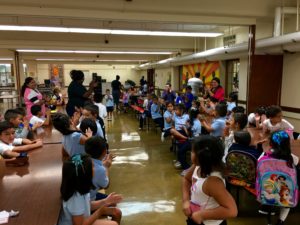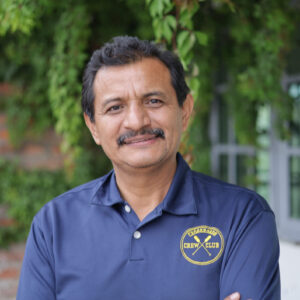 |

Rosy Becerra
Coordinator of Equipping for Latin America
|
What is your role at Crossroads?
Training Coordinator for Crossroads Kids Club leaders and teachers. Create and design training courses according to the needs of the clubs. Deliver workshops and courses. Visit clubs, maintain contact with leaders and teachers.
What is your favorite part of what you do at Crossroads?
My favorite part is seeing how the teachers and club leaders, once they receive training, feel more confident and secure about performing their duties in front of the children. It is very gratifying to observe their interest in learning and the love they show in different conflicts the children present and to know that they are doing a work of containment and love within the clubs.
What are three words that people use to describe you?
Kind, intelligent, capable
What’s something that makes you feel like a kid again?
I feel like a child when I see nature. I remember when my parents used to take us on trips, either by car or train. Seeing and enjoying the landscapes, the mountains, the sea, the desert, or the fields generates a lot of joy for me. I feel like a child when I am teaching a class in front of children, playing with them, listening to them, laughing, eating a snack.
What’s an interesting or unexpected skill or talent you possess?
Social and relationship skills. I like listening to people, teaching, and group management.
What’s a book that has had an impact on you?
Several books have had an impact on me. Living on the Edge by Loren Cunningham, Profile of Three Monarchs by Gene Edwards, and undoubtedly, The Bible.
What’s a favorite quote?
Philippians 4:13, “For I can do everything through Christ who gives me strength.”
 Leverage the power of the small group. Large clubs run most smoothly when almost everything is done in small group format: from check in, to snack, to games, to check out. Even during the 10-15 minute large group lesson, kids sit with their SGL. That leaves 85% of the club time to be done in small groups. This helps to foster caring relationships and manage behavior. It also allows the club to meet in multiple spaces in the school, which means it can grow larger than any one space can accommodate.
Leverage the power of the small group. Large clubs run most smoothly when almost everything is done in small group format: from check in, to snack, to games, to check out. Even during the 10-15 minute large group lesson, kids sit with their SGL. That leaves 85% of the club time to be done in small groups. This helps to foster caring relationships and manage behavior. It also allows the club to meet in multiple spaces in the school, which means it can grow larger than any one space can accommodate. 











































